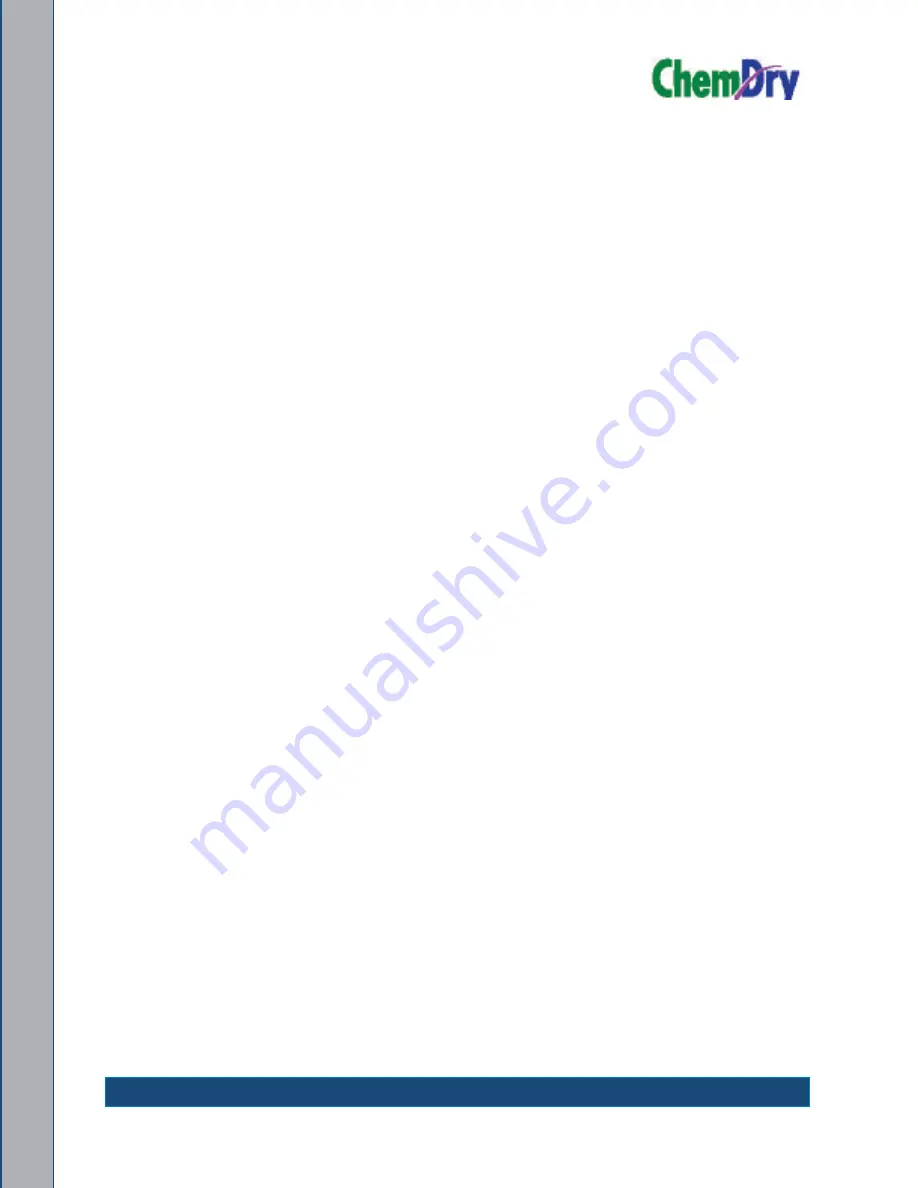
4-17: Machine Maintenance
SERVICE HEAT EXCHANGER INDICATOR - CTS 403
The engine backpressure is measured at a small port on the inlet plenum of the heat
exchanger assembly. The exhaust of the blower and engine combine at the plenum and
represents the most accurate pressure reading for the engine exhaust.
It is the combination of these two systems that is being monitored by the pressure switch,
located on the right-hand side of the machine with the other relays and fuses. The pressure
switch and light are designed to measure the backpressure of the heat exchanger as
an indicator of potential clogging due to chemical build up, carbon, and other debris.
When the level of backpressure reaches the maximum safe upper limit, a continuous
red SERVICE HEAT EXCHANGER light on the dash will indicate a need to inspect and
possibly clean out the heat exchanger assembly. This can be easily accessed through
the removable plate on the left-hand side of the unit. Removing the access plate on the
right side and shining a flashlight through from this side to the left side will show is there
is blockage and the level of cleaning required.
The pressure switch is calibrated at a level that will register at the correct backpressure
range, with a recovery tank connected to the machine. Due to the nature of backpressure
switch and measuring it from the location, a flickering of the SERVICE HEAT EXCHANGER
light might occur at very low levels of pressure, and approximately 4” Hg is required at a
minimum. Sudden changes in pressure during the use of the machine might also cause
a flickering of the indicator light. Though it is never a bad idea to check the condition of
the heat exchanger core, a continuously lit red SERVICE HEAT EXCHANGER light will
indicate a necessary investigation.
It is recommended to clean the heat exchanger core using an air conditioning coil fin
comb and an aerosol foam no rinse coil cleaner, warm and soapy water, isopropyl alcohol,
or other method using the access ports on the sides of the assembly. After cleaning out
the heat exchanger, verify the backpressure system is working properly before returning
the unit to work duty.
During the cleaning process, be aware of the debris flooded through the heat exchanger
might be blown out of the assembly and into the surroundings. To minimize the potential for
spraying water, cleaning solution etc. reinstall port plate on the right side prior to cleaning.
Collect dirty water and chemical residue that comes out of the heat exchanger, exhaust,
or silencer. If water was used, run the unit after cleaning long enough for any water that
collected in the silencer to be heated to vapor and passed through the system. Water in
the silencer might rust and prematurely degrade the component, leading to failure.
It might be necessary to remove the entire heat exchanger assembly and disassemble
the cores for a more thorough tank soak. It is recommended to do this every 1000 hour
of the machine operation and might be required more frequently depending on how clean
the core can be kept using the access ports, machine use, type of cleaning, and other
factors.
Содержание CTS 403 Flex
Страница 2: ......
Страница 52: ...5 1 Solution Flow Paths 5 Solution Flow Paths This section shows the high and low pressure flow diagrams...
Страница 71: ...7 13 Troubleshooting...
Страница 135: ...How to Order Parts 9 2...
Страница 140: ......
















































